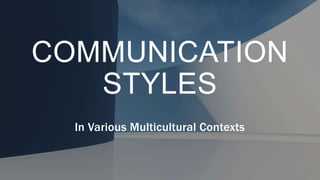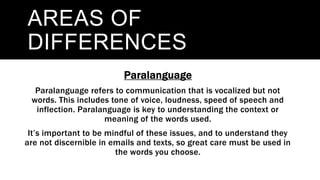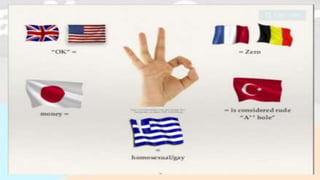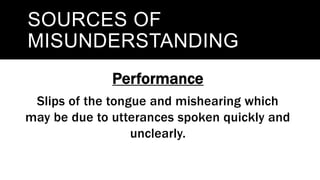This document discusses challenges in intercultural communication. It notes that communication styles vary widely across cultures in aspects like language usage and nonverbal cues. Some key differences in nonverbal communication across cultures include physical distance, facial expressions, appearance, posture, and paralanguage. The document also discusses potential sources of misunderstanding such as ambiguity, performance issues, language ungrammaticality, gaps in world knowledge, and local context. It provides tips for avoiding misunderstanding in nonverbal communication such as paying close attention, maintaining eye contact and an open body position, sitting at the same level, and avoiding fidgeting.





















